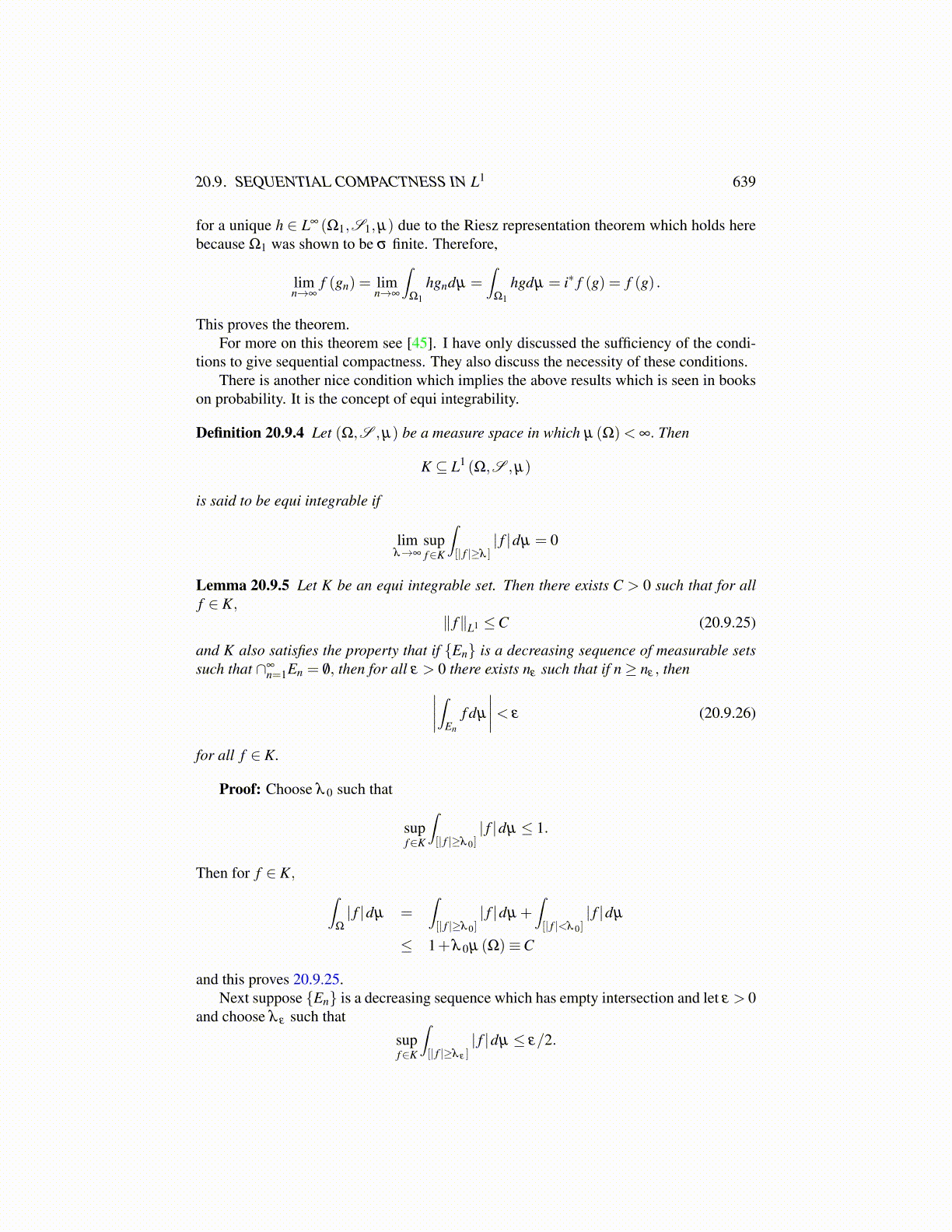
20.9. SEQUENTIAL COMPACTNESS IN L1 639
for a unique h ∈ L∞ (Ω1,S1,µ) due to the Riesz representation theorem which holds herebecause Ω1 was shown to be σ finite. Therefore,
limn→∞
f (gn) = limn→∞
∫Ω1
hgndµ =∫
Ω1
hgdµ = i∗ f (g) = f (g) .
This proves the theorem.For more on this theorem see [45]. I have only discussed the sufficiency of the condi-
tions to give sequential compactness. They also discuss the necessity of these conditions.There is another nice condition which implies the above results which is seen in books
on probability. It is the concept of equi integrability.
Definition 20.9.4 Let (Ω,S ,µ) be a measure space in which µ (Ω)< ∞. Then
K ⊆ L1 (Ω,S ,µ)
is said to be equi integrable if
limλ→∞
supf∈K
∫[| f |≥λ ]
| f |dµ = 0
Lemma 20.9.5 Let K be an equi integrable set. Then there exists C > 0 such that for allf ∈ K,
∥ f∥L1 ≤C (20.9.25)
and K also satisfies the property that if {En} is a decreasing sequence of measurable setssuch that ∩∞
n=1En = /0, then for all ε > 0 there exists nε such that if n≥ nε , then∣∣∣∣∫En
f dµ
∣∣∣∣< ε (20.9.26)
for all f ∈ K.
Proof: Choose λ 0 such that
supf∈K
∫[| f |≥λ 0]
| f |dµ ≤ 1.
Then for f ∈ K, ∫Ω
| f |dµ =∫[| f |≥λ 0]
| f |dµ +∫[| f |<λ 0]
| f |dµ
≤ 1+λ 0µ (Ω)≡C
and this proves 20.9.25.Next suppose {En} is a decreasing sequence which has empty intersection and let ε > 0
and choose λ ε such that
supf∈K
∫[| f |≥λ ε ]
| f |dµ ≤ ε/2.